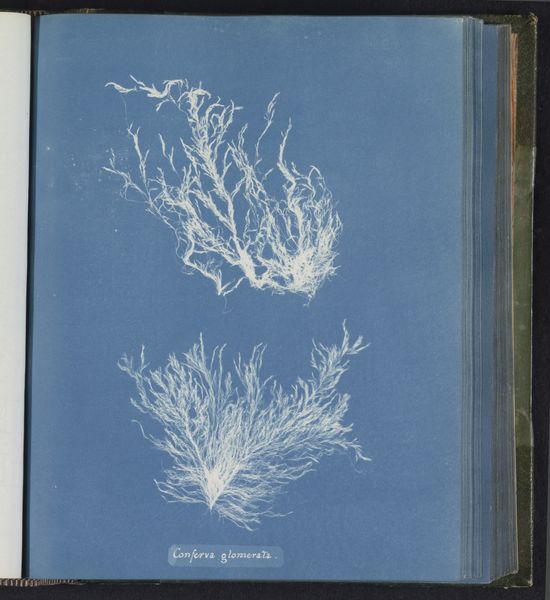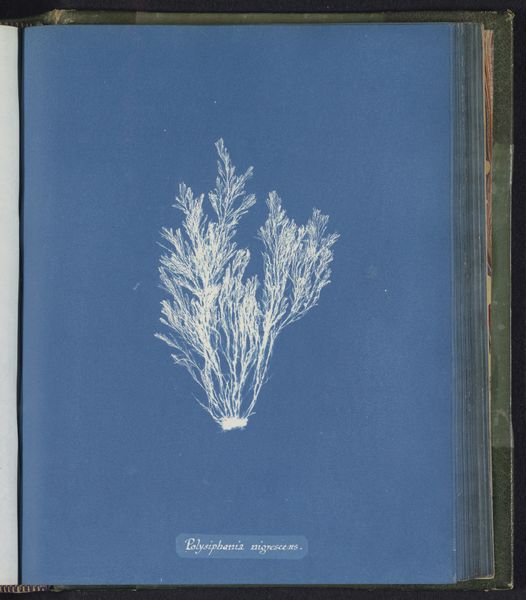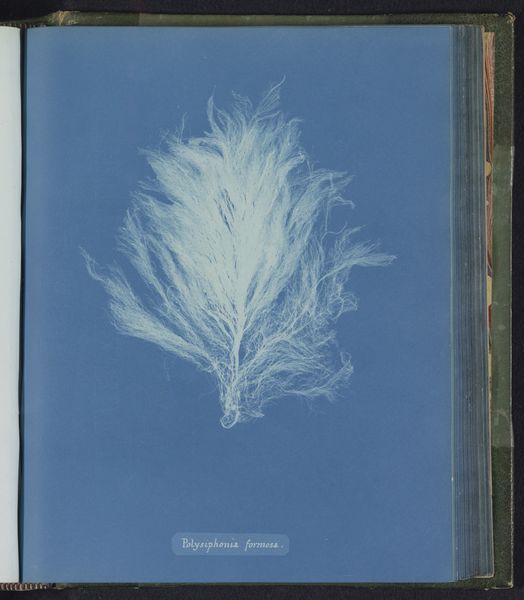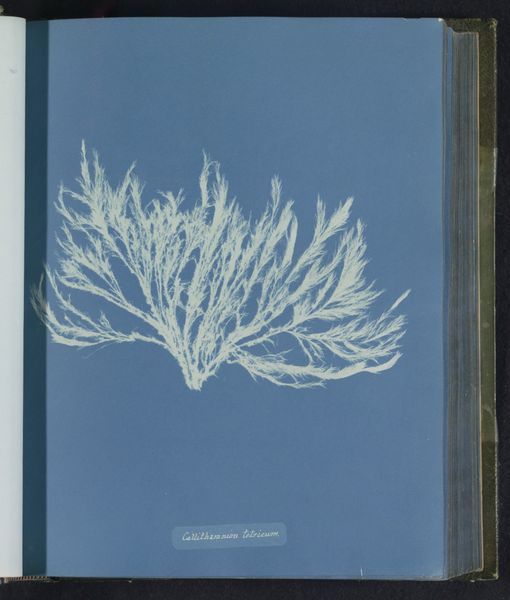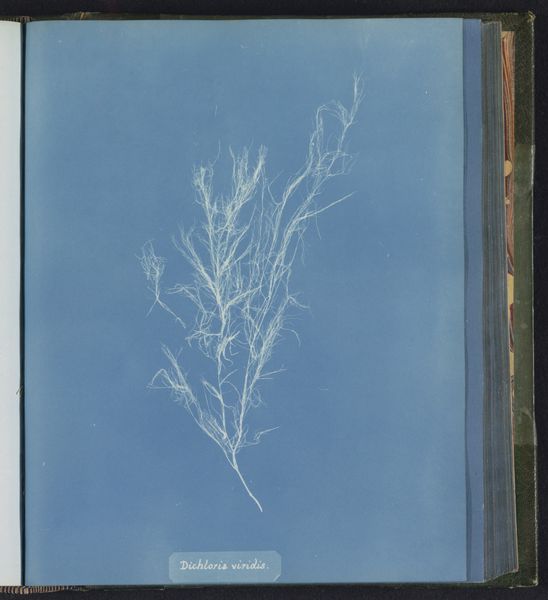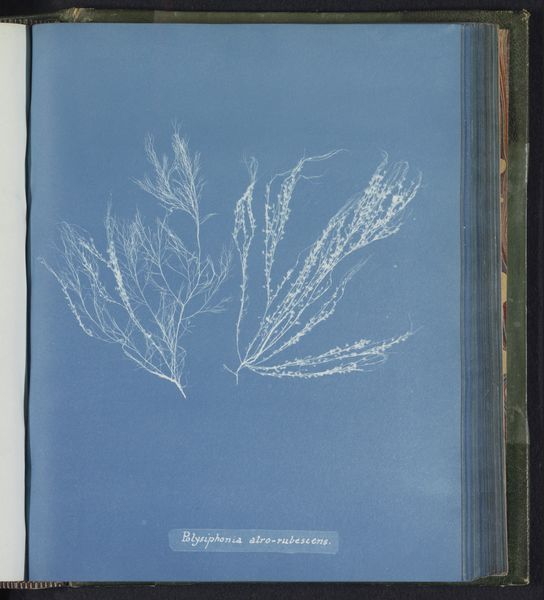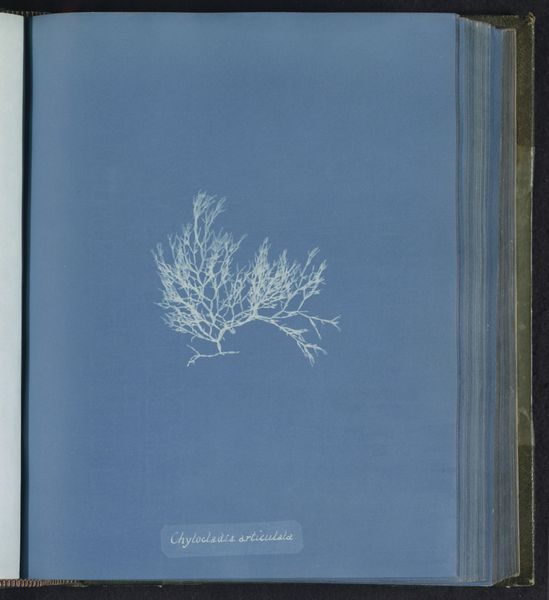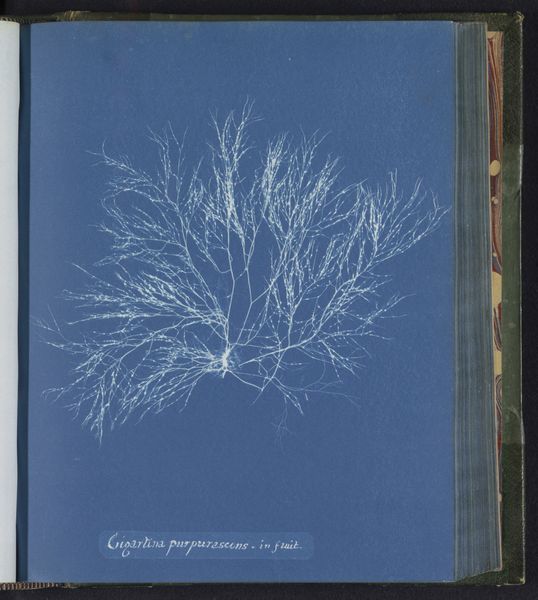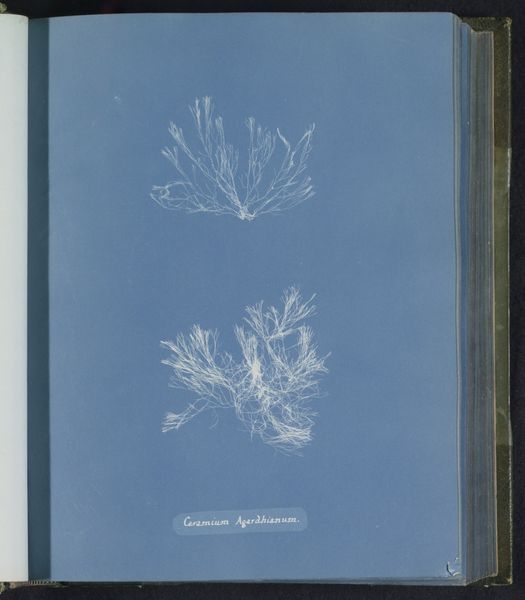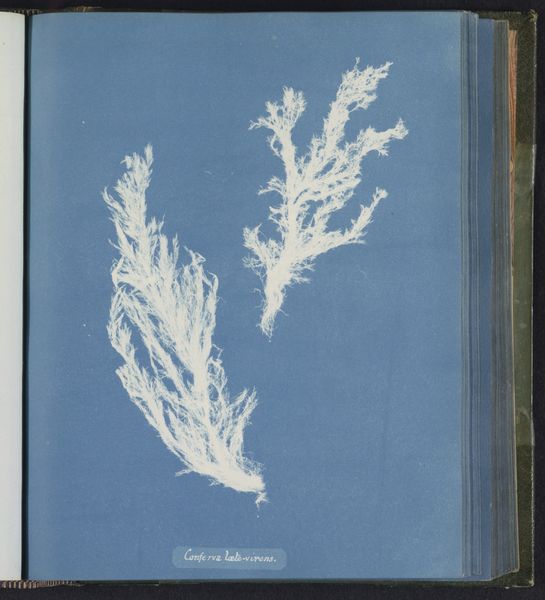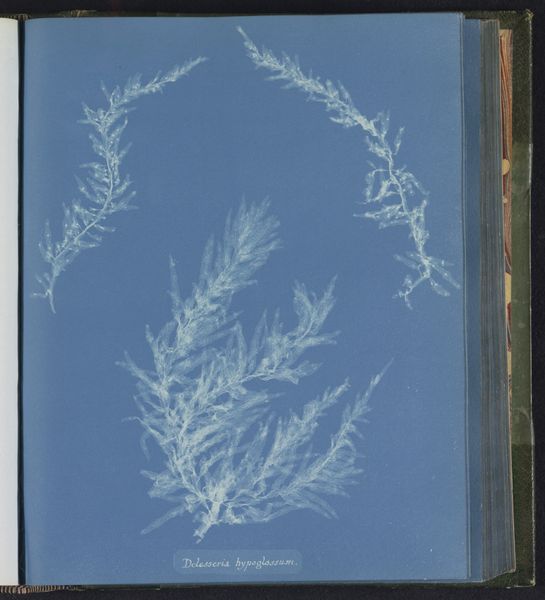
print, cyanotype, photography
#
still-life-photography
#
organic
# print
#
cyanotype
#
photography
#
realism
Dimensions: height 250 mm, width 200 mm
Copyright: Rijks Museum: Open Domain
Editor: Here we have Anna Atkins' "Polysiphonia nigrescens," a cyanotype from the mid-1800s. I'm really struck by how delicate the white seaweed looks against the deep blue background. What significance do you find in this almost ghostly image? Curator: This work transports us, doesn't it? The cyanotype process itself, discovered only a few years prior, imbued photography with a scientific, almost alchemical quality. Think about it: Atkins, a botanist, used this new technology not just to document, but to inscribe knowledge. Editor: Inscribe knowledge? Curator: Exactly! This image becomes more than just seaweed. The choice of cyanotype—a process reliant on the sun's power—turns the algae into a kind of solar record. The intense blue becomes linked to enlightenment, scientific revelation... the very unlocking of nature's secrets. How does that idea resonate with you? Editor: That’s fascinating! So the blue is like, encoded information? It's almost as if the image is saying, "Here's a glimpse of the deep, and the knowledge contained within it." I was so focused on its beauty; I hadn't considered its deeper symbolic potential. Curator: Precisely. And this brings us back to the enduring power of imagery. What at first seems like a simple, realistic portrayal reveals a confluence of science, art, and a burgeoning understanding of the world around us, forever imprinted in that distinctive cyan hue. Editor: I will never look at this the same way!
Comments
No comments
Be the first to comment and join the conversation on the ultimate creative platform.
